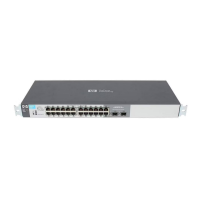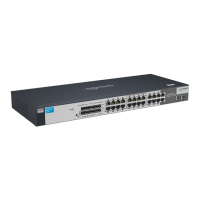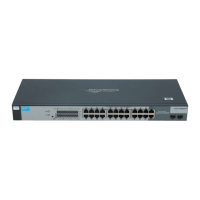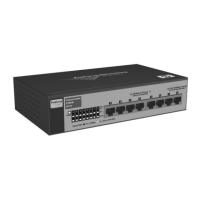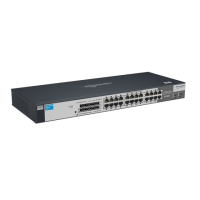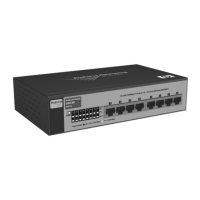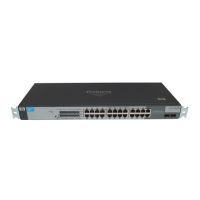
Do you have a question about the HP ProCurve 1810G-8 and is the answer not in the manual?
| Switching Capacity | 16 Gbps |
|---|---|
| MAC Address Table Size | 8000 entries |
| VLAN Support | Yes |
| Management | Web-based GUI |
| Throughput | 11.9 Mpps |
| Jumbo Frame Support | Yes |
| Ports | 8 x 10/100/1000 |
| Weight | 2.2 lbs |
| Operating Temperature | 0°C to 40°C (32°F to 104°F) |
| Storage Temperature | -40°F to 158°F (-40°C to 70°C) |
| Humidity | 15% to 95% non-condensing |
| Form Factor | Desktop, Rack-mountable |
Details the physical components and design of the switch.
Explains the function and meaning of various system and port LEDs on the switch.
Describes how to use the LED mode select button to view different port statuses.
Explains the function of the reset and clear buttons for troubleshooting and configuration.
Lists the core functionalities and capabilities of the ProCurve 1810G-8 Switch.
Describes the power-saving Green Mode feature and its configuration via the web interface.
Lists all the components included in the switch package.
Outlines the step-by-step installation process and essential safety precautions.
Details site preparation, cable types, clearance, and verifying the switch passes self-test.
Describes different methods for physically mounting the switch (horizontal, wall, under-table).
Guides on connecting the switch to power and network cables.
Guides on setting up the switch for the first time via its web interface.
Explains how to reconfigure a PC's IP address to communicate with the switch.
Points to additional resources for further configuration and information.
Offers common solutions to basic problems encountered with the switch.
Explains how to interpret LED patterns for diagnosing switch issues.
Details how to reset the switch and restore factory default configurations.
Provides information on how to get technical support from HP and what information to prepare.
Lists the physical dimensions and electrical requirements of the switch.
Details environmental conditions, safety standards, and connector types.
Describes recommended cabling types and requirements for different network speeds.
General safety warnings and precautions for using the equipment.
Information regarding electromagnetic compatibility regulations for various regions.
Information on proper disposal of electronic waste according to WEEE directives.
